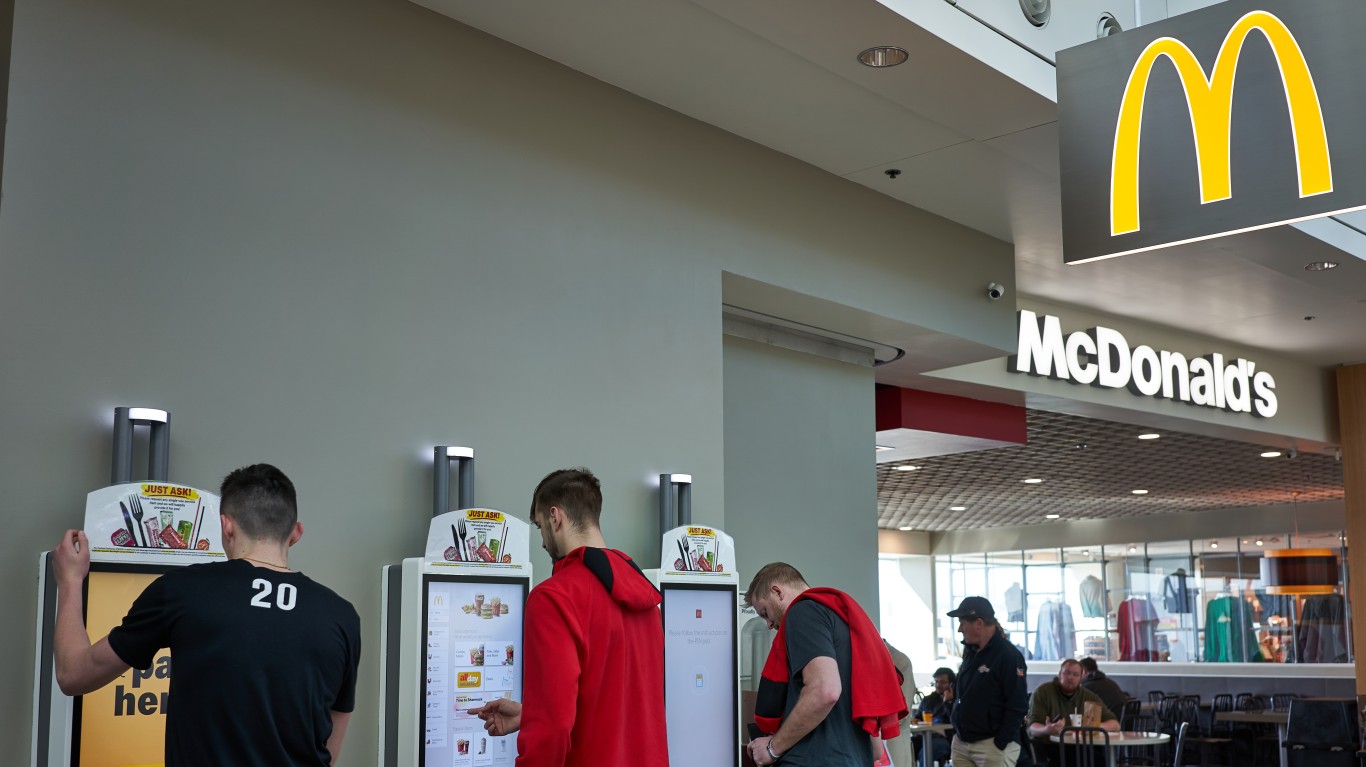Shares of Coca-Cola Co. (NYSE: KO) rose about 17% in 2013, short of the 26.5% seen on the Dow Jones Industrial Average and far short of almost 30% for the S&P 500 index. Arch rival PepsiCo Inc. (NYSE: PEP) rose by almost 25% in 2013. The question now is what to expect in 2014. 24/7 Wall St. is evaluating the bullish and bearish scenarios in each Dow stock for 2014.
There are many macroeconomic factors to consider here that could affect the likes of Coca-Cola and rival Pepsi. Most Wall Street strategists are forecasting higher price targets for the S&P 500. This rising tide should lift most ships, and that may be the case for a defensive stock like Coca-Cola. The Federal Reserve is about to get a new chairman. It is generally expected that interest rates will rise. The world markets are exiting their recessions at the same time that U.S. gross domestic product is expected to tick up.
Some investors may now be challenging whether Coca-Cola is truly a defensive stock. That has been the case for decades, but the soft drink maker is under fire for its sugary drinks. It has been unable to fend this off entirely with bottled water sales and other new products.
Shares of Coca-Cola trade around $40.50, the consensus analyst price target is almost $45.00 and the 52-week trading range is $36.52 to $43.43. Coke’s market cap is a whopping $178 billion, and its current dividend yield for 2014 is 2.7%, versus about 2.8% for Pepsi.
The bullish case for Coca-Cola is that it is perhaps underappreciated and it effectively only has Pepsi as a competitor in most markets. Coca-Cola also still has much at stake in the world and emerging markets, which only recently are able to afford to spend money on thinks like soft drinks. The company also claims to be generating new products for the next generation. Another boost is that analysts see more than 10% upside for 2014. Barron’s opined that Coca-Cola could regain its fizz, and Credit Suisse went on the record saying that all the bad news was already priced into the stock.
Coca-Cola’s bearish case is that it is under attack for its products, and case volume sales have not seen much growth domestically. It seems that sugar is the next tobacco when it comes to health advocates. Another issue is that Coke trades at just over 18 times expected 2014 earnings. Is that a fair multiple for a low-growth defensive stock? Pepsi is valued at about 17.5 times expected 2014 earnings, and analysts still see about 10% upside in the rival’s stock as well.
Investors still seem to see better times for Pepsi because it at least has the snack business to offset weak soda volumes. Both stocks have issues hampering their defensive status in the years ahead, and valuations seem a bit high, considering that growth beyond population growth and inflation may be a bit elusive in the future.
Thank you for reading! Have some feedback for us?
Contact the 24/7 Wall St. editorial team.


